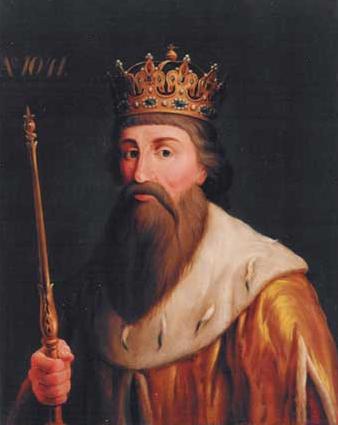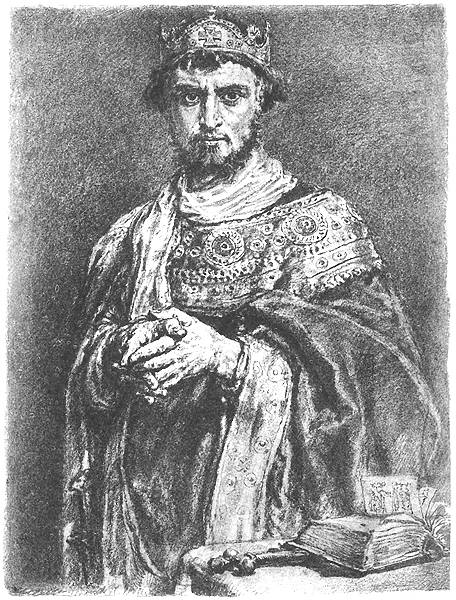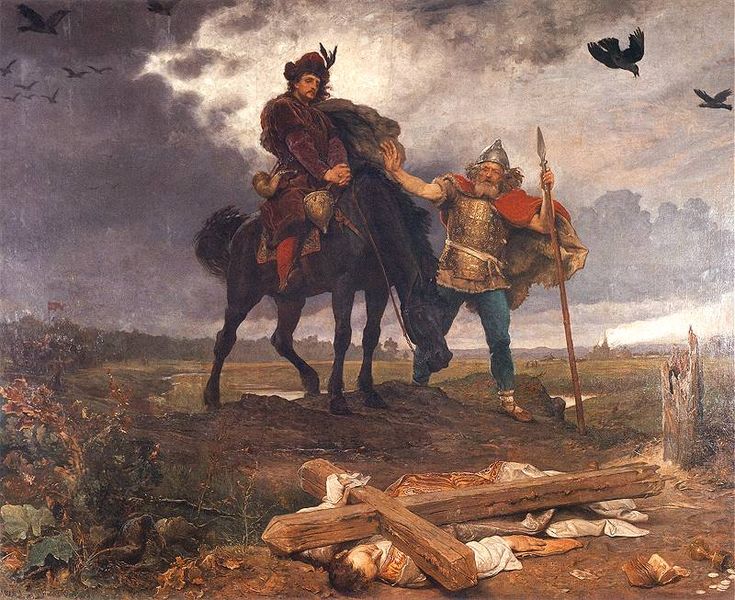<Back to Index>
- Astronomer Christoph Scheiner, 1573
- Novelist Elias Canetti, 1905
- Duke of Poland Casimir I the Restorer, 1016
PAGE SPONSOR


Casimir I the Restorer (Polish: Kazimierz I Odnowiciel; b. Kraków, 25 July 1016 - d.Poznań, 28 November 1058), was a Duke of Poland of the Piast dynasty and the de facto monarch of the entire country since 1034 until his death.
He was the only son of Mieszko II Lambert by his wife Richeza, daughter of Count Palatine Ezzo of Lotharingia (Ezzonen) and granddaughter of Emperor Otto II. Casimir is known as the Restorer mostly because he managed to reunite all parts of the Polish Kingdom after a period of turmoil. He reinstated Masovia, Silesia and Pomerania into his realm. However, he failed to crown himself King of Poland, mainly because of internal and external threats to his rule. Relatively little is known of Casimir's early life. He must have spent his childhood at the royal court of Poland in Gniezno.
In order to acquire a proper education, he was sent to one of the
Polish monasteries in 1026. Some sources believed that he wanted to
follow the Church career (it is probable he held the post of Oblate) and even asked for a dispensation to became a monk. This hypothesis,
however, is not supported among modern historians. He left the church,
however, in 1031. Casimir's father Mieszko II was crowned the King of Poland in 1025 after the death of his father Bolesław I the Brave.
However, the powerful magnates feared a strong central government
reminiscent of Bolesław I's rule. This situation led to considerable
friction between the King and the nobility. Taking advantage of the King's precarious situation, Mieszko II's brothers Bezprym and Otto turned against him and allied themselves with the Emperor Conrad II, whose forces attacked the country, regaining Lusatia.
Years of chaos and conflict followed, during which Mieszko II died
(1034) in suspicious circumstances after he was forced to abdicate. At the time of his father's death, Casimir was in Germany in the court of his uncle Hermann II, Archbishop of Köln.
In 1037 both the young prince and his mother attempted to seize the
throne and returned to Poland. This precipitated a Barons rebellion,
which coupled with the so called "Pagan Reaction" of the commoners
forced Casimir and Richeza to flee to Saxony. However,
soon Casimir returned to Poland and in 1038, once again, tried to
regain power with the aide of his influential mother. This also failed
and he had to flee again, this time to the Kingdom of Hungary where he was imprisoned by Stephen I. The Dowager Queen remained in Germany as a nun until her death, in 1063.
The central parts of Poland were controlled by Bezprym. The central district of Wielkopolska revolted against the nobles and catholic clergy in a mass rebellion. Pagan revival ensued there for some years. The district of Masovia seceded and a local landlord named Miecław formed a state of his own there. A similar situation took place in Pomerania. Taking advantage of the chaos and his neighbour's weakness, Duke Bretislaus I of Bohemia, invaded and ravaged the country: Lesser and Greater Poland were severely pillaged, captured Poznań and sacked Gniezno, bringing the relics of Saint Adalbert, Radim Gaudentius and other five eremites back with him. On the way back he conquered part of Silesia including Wrocław and
destroyed religious buildings, which were built by Mieszko I on the
feast of the conversion of Poland and plundered Mieszko I's tomb. Casimir could escape to Hungary and went to Germany, where in 1039 his relative the Emperor Henry III (who
feared the increased power of the Bohemian ruler) gave him military and
financial support. Casimir received a troop of 1,000 heavy footmen and
a significant amount of gold to restore his power in the country.
Casimir also signed an alliance with Yaroslav I the Wise, the Prince of Kievan Rus',
who was sealed by Casimir's marriage with Yaroslav's sister, Maria
Dobronega. With such support, Casimir returned to Poland and managed to
retake most of his domain. In 1041, Bretislaus defeated at the second
attempt by Emperor Henry III, signed a treaty at Regensburg (1042) in which he renounced his claims to all Polish lands except for Silesia, which was to be incorporated into the Bohemian Kingdom. It was Casimir's success in strengthening royal power and ending internal strife that earned him the epithet of "the Restorer". The treaty gained Casimir a period of peace at the southern border and the capital of Poland was moved to Kraków,
the only major Polish city relatively untouched by the wars. It is
probable that the Holy Roman Emperor was pleased with the balance of
power restored in the region and forced Casimir not to crown himself
the King of Poland. In 1046 Emperor Henry III held royal and imperial
courts at Merseburg and Meissen, at which he ended the strife among the Dux Bomeraniorum (Duke of Pomerania), Duke Bretislaus of Bohemia, and Casimir I. In 1047 Casimir, aided by his Kievan brother-in-law, started a war against Masovia and seized the land. It is probable that he also defeated Miecław's allies from Pomerania and attached Gdańsk to
Poland. This secured his power in central Poland. Three years later,
against the will of the Emperor, Casimir seized Bohemian controlled
Silesia, thus securing most of his father's domain. In 1054 in Quedlinburg,
the Emperor ruled that Silesia was to remain in Poland in exchange for
a yearly tribute of 117 kg. of silver and 7 kg. of gold. At that time Casimir focused on internal matters. To strengthen his rule he re-created the bishopric in Kraków and Wrocław and erected the new Wawel Cathedral. During Casimir's rule heraldry was introduced in Poland and, unlike his predecessors, he promoted landed gentry over the drużyna as his base of power. One of his reforms was the introduction, to Poland, of a key element of feudalism: the granting of fiefdoms to his retinue of warriors, thus gradually transforming them into medieval knights.
